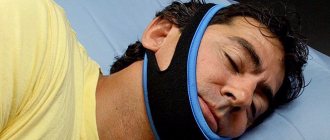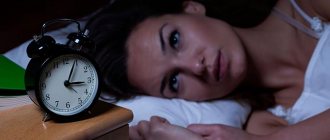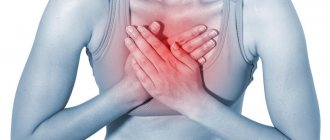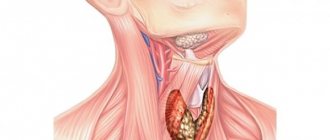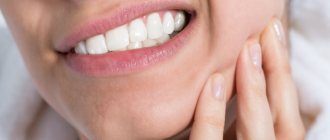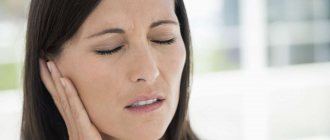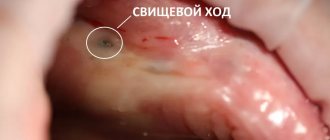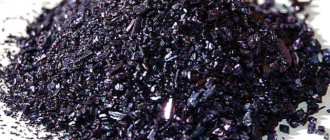Why does the left side of my head hurt?
Physiological reasons
Under certain circumstances, pain in half the head can occur in a healthy person. Features of the pain syndrome are episodic in nature, rapid disappearance after rest or taking an analgesic. The symptom is observed in the following cases:
- Intense physical activity
. A combination with darkening of the eyes, dizziness, shortness of breath, palpitations and tingling in the heart area is possible. - Stressful situations
. The left or right half of the head hurts due to the release of stress hormones, causing vasoconstriction and increased blood pressure. There is pronounced emotional stress. - Mental fatigue
. Pain is caused by significant mental stress, as well as the need for prolonged concentration and tension when staying in one position, for example, when preparing for an exam or working at a computer. - Bad habits
. The symptom sometimes appears with the abuse of tonic drinks (coffee, strong tea, energy drinks), smoking and drinking alcohol. The cause is changes in vascular tone and the entry of toxic substances into the body.
Cluster headache
It develops in people of a certain type - it affects mainly tall men with an athletic build, ambitious but indecisive. The pain syndrome develops acutely, reaches a peak within a few minutes, lasts from 15 minutes to 3 hours. The pain most often occurs in the left side of the head. It is most strongly expressed in the orbit, burning, stabbing, unbearable, reminiscent of a “rupture” or “squeezing out” of the eye. Cluster headache is accompanied by autonomic disorders. It decreases with movement, so patients rush around and punch the wall.
Migraine
During a migraine, the left side of the head hurts somewhat less frequently than the right side. The pain is pressing, throbbing, with the epicenter in the temple, forehead or eye. Sometimes painful sensations arise in the back of the head, and from there spread to the entire half of the head. A typical sign of pathology is the periodic change of the affected side. Manifestations vary slightly depending on the type of migraine:
- Simple migraine.
Diagnosed in 80% of cases. There is no aura. A prodrome in the form of drowsiness, worsening mood, and decreased performance is possible. Hemicrania is combined with nausea and vomiting, and intensifies with movements and exposure to auditory and sound stimuli. Lasts from 4 hours to 2-3 days. - Migraine with aura.
The attack itself proceeds in the same way as with a simple migraine. The difference lies in the presence of an aura - visual disturbances, transient sensitivity disorders, ringing in the ears, the appearance of unusual smells or sounds, and deterioration of speech. Migraine in children is often preceded by “Alice syndrome” - visual distortion of objects, visual hallucinations. Lasts from several hours to 4 days. - Ocular migraine.
Typically there is loss of certain areas of the visual field, the presence of paracentral or central scotomas, and flickering before the eyes. The headache is throbbing, occurs in the forehead, moves to the orbit. The duration of visual disturbances is 10-20 minutes, the duration of an attack of cephalgia is 30-120 minutes. - Vestibular migraine.
Manifests with a prodrome, which is subsequently joined by dizziness, sometimes in combination with other variants of the aura. Then half of the patients develop pain in the left or right side of the head, lasting no more than 3 days. Dizziness stops with the onset of hemicrania, persists throughout the entire painful attack or becomes its only manifestation (painless paroxysms).
If the symptom persists for more than 3 days or a series of continuous paroxysms during this time, they speak of migraine status. The pain is very intense, wave-like. Pallor, adynamia, severe weakness, inability to take food and medications due to repeated vomiting, and increasing dehydration are observed. The condition is serious.
Pain in the left side of the head
Paroxysmal hemicrania
Unilateral pain is paroxysmal, very severe. It can be aching, pulsating, burning, boring, stabbing or reminiscent of a fist blow. It is localized mainly in the temple or orbit, less often in the area of the forehead, back of the head or crown of the head. Associated with damage to the trigeminal nerve. An attack of paroxysmal hemicrania lasts from 5 to 45 minutes; during the period of exacerbation, from 1 to 40 episodes can be observed per day. It is supplemented by vegetative symptoms, drooping eyelids, constriction of the pupil, and photophobia.
Vertebrobasilar insufficiency
Left-sided or right-sided headache is observed in the spondylogenic form of vertebrobasilar insufficiency. Develops suddenly with movement. From the neck and back of the head it spreads to the forehead, temple and eye socket, and radiates into the arm. A clear connection is revealed between the intensity of cephalalgia and the position of the cervical spine. The pain syndrome is complemented by unilateral hearing loss, noise in the ear, dizziness, visual disturbances, cerebellar disorders and autonomic reactions.
Hypnic headache
It is observed in people over 50 years of age and is chronic. It always develops during sleep, in 40% of cases it occurs only in the left or right half, in other cases it spreads to the entire head. An attack of hypnic headache forces the patient to wake up. On average, it lasts 30-60 minutes, repeats from once a week to several paroxysms throughout the night. The painful sensations are dull, moderately expressed, less often intense. Mild nausea and increased sensitivity to sounds and bright light may occur.
Cerebral tumors
Local pain in the left side of the head becomes an early symptom of tumors on the left side. Deep, bursting, quite intense, often occurring in the form of paroxysms. As neoplasia progresses, hemicrania is complemented by increasing focal symptoms. Then there are cerebral manifestations caused by edema and intracranial hypertension. The pain becomes diffuse, bilateral, accompanied by dizziness, nausea, and vomiting.
Arachnoiditis
The left half of the head may hurt with limited arachnoiditis, which developed in the long-term period after a head injury, inflammatory and infectious diseases. Symptoms increase gradually. The pain is bursting, more disturbing in the morning, combined with emotional instability, fatigue, irritability, and sleep disturbances. Subsequently, focal symptoms may develop, the process may spread with diffuse headaches and liquorodynamic crises.
Other reasons
Pain in the left side of the head is provoked by certain rheumatic and otolaryngological pathologies and diseases of the spine. The cause of the symptom is:
- Horton's disease.
The pain is one- or two-sided, dull, throbbing, with an epicenter in the temple area, intensifying at night, growing over several weeks. Fever, anorexia, myalgia, arthralgia, thickening and tenderness of the temporal and parietal arteries are noted. - Sinusitis.
Left-sided hemicrania accompanies unilateral frontal sinusitis and sinusitis with damage to the left paranasal sinus. Pulsating, bursting, localized in the eyebrow and forehead area, radiating to the temple. Complemented by general hyperthermia, intoxication, nasal discharge. - Mastoiditis.
Develops against the background of purulent otitis media. Accompanied by intense pain in the ear and behind the ear, which spreads to the crown, temple, orbit and upper jaw, sometimes covering the entire half of the head. Febrile temperature, intoxication, and profuse suppuration from the ear are observed. - Spine pathologies
. Unilateral compression of blood vessels and nerves due to osteochondrosis, protrusion, hernia and some other diseases of the cervical spine causes pain in the left half of the head. It is accompanied by pain in the neck, and sometimes by numbness and weakness of the upper limb.
Causes of pain in the occipital region of the head. Self help
Often, we rarely run to the doctor if something doesn’t hurt us too much; we only decide to visit an aesculapian when it’s already too hot. When experiencing pain in any part of the body, we sometimes do not even suspect that the cause of pain in one place may be the ill health of a completely different organ. This is what we will talk about today.
The most common causes of neck pain
Spine.
The presence of diseases of the spine in the cervical region, such as spondylosis, osteochondrosis, neck dislocations, spondylitis, can cause pain in the back of the head. Head movements are accompanied by neck pain.
Mental stress.
Stress is the main cause of a nervous state, and, accordingly, occipital pain. People, especially women, over 25 years of age should beware of stress, as they are at risk.
Overstrain of a physical and mental nature.
Excessive stress on the cervical spine also often causes discomfort in the back of the head. However, overstrain can also be mental. Concentrating on something, staying in one position for a long time, or an uncomfortable position also has unpleasant consequences.
High blood pressure.
This is the case when you need to see a doctor as soon as possible. The first sign of this condition is constant headaches in the back of the head in the morning.
Poor blood circulation in the muscles.
Poor blood circulation in the neck muscles leads to the appearance of compactions in them, which is called myogelosis. The reasons for its appearance are:
- stress;
- drafts;
- staying in one position for a long time and, as a result, muscle stiffness;
- problems with posture.
In this case, occipital pain is not the only sign of the disease. Dizziness, pain in the shoulders, and difficulty moving also appear.
Problems with peripheral nerves.
Neuralgia is the most common cause of pain. If you have neuralgia, a person also experiences pain in the jaw, neck, back, and ear. It hurts the patient to even cough or sneeze. In order to avoid the development of hypertension, you need to consult a specialist in time.
Migraine.
Migraine occurs not only in the head, but also in the neck. The pain, in this case, affects not only the back of the head, but also the temples. There may also be pain in the eyes, dizziness, a feeling of a white veil before the eyes, and hearing loss may develop.
Poor blood circulation in the brain.
Due to disturbances in the circulatory system of the brain, its functioning deteriorates. In this case, a person may experience, in addition to pain in the back of the head, dizziness, a sensation of tinnitus, visual and hearing disturbances. In some cases, nausea, fainting, vomiting may occur, and coordination of movements may be impaired.
First aid
If right now you cannot visit a doctor, and the pain does not go away, then you need to know first-aid techniques in order to experience relief at least for a while.
- Massage. It is done on the neck, shoulders and back of the head. You can do it yourself, but it is not very convenient, so it is better to ask someone for help. The main thing is not to make sudden, strong movements, and when pressing on any areas, do not apply force. It is better to stretch it a little and stroke it with relaxing movements.
- Change your body position, stretch, do exercises and be sure to ventilate the room.
- It is allowed to take medications that relieve spasms. In some cases, medications are taken that reduce muscle tone. But you can do this only if you are sure that the cause of pain in the back of the head is precisely the tightened neck muscles.
When and which doctor should I contact?
Of course, it is undesirable to engage in self-diagnosis and self-medication, therefore, when the first signs of pain in the back of the head appear, it is better to consult a doctor in order to accurately determine their cause.
This problem is dealt with by specialists such as a traumatologist, a neurologist and a massage therapist.
First, visit a neurologist, and he will redirect you to the right specialist. Author: K.M.N., Academician of the Russian Academy of Medical Sciences M.A. Bobyr
Diagnostics
A neurologist is involved in determining the nature of the disease that provokes pain in the left half of the head. According to indications, a rheumatologist, oncologist, and otolaryngologist are involved. Primary cephalgia (migraine, cluster and hypnic headache, paroxysmal hemicrania) are diagnosed based on clinical symptoms, auxiliary methods are prescribed to exclude organic pathology.
In other cases, when establishing a diagnosis, they rely on both objective data and the results of imaging and laboratory techniques. The examination program includes the following procedures:
- Echoencephalography.
It is produced to measure intracranial pressure and helps to exclude conditions accompanied by intracranial hypertension. Despite the possibility of detecting volumetric processes, in the early stages of tumors it may not be informative due to the small size of the formations. - Assessment of cerebral blood flow
. Includes duplex scanning, ultrasound examination of the vessels of the head and neck. As part of differential diagnosis, it allows you to detect hemodynamic disorders characteristic of atherosclerosis and other diseases. Recommended for patients with vertebrobasilar insufficiency to clarify the nature and structure of the stenosis. - Radiography
. Standard photographs of the cervical spine reveal signs of hernia, osteochondrosis and other diseases of the spinal column. To confirm extravasal compression of the vertebral artery, radiographs with functional tests are taken. For sinusitis, an X-ray of the paranasal sinuses is performed, and for mastoiditis, an X-ray of the temporal bone is performed. - Tomography
. MRI of the brain is prescribed for suspected tumors and arachnoiditis. In angiography mode, it provides comprehensive information about the condition of the main arteries. If a vertebrogenic etiology of pain is suspected, MRI and CT of the cervical spine are performed. For sinusitis, an MRI of the sinuses is sometimes performed.
Consultation with a neurologist
Causes of headaches behind the ears
A headache in the ear area is a symptom of various pathologies that can cause significant harm to health. Doctors advise paying attention to the first symptoms, as diseases can progress. Painful sensations behind the ears can be accompanied by fever, hearing loss and other complaints - they must be taken into account during diagnosis.
Diseases of the hearing organ
The main reason why a headache behind the ear on the left or right is due to diseases of the hearing organ. Discomfort can be caused by inflammatory processes or damage in any of its parts. The hearing organ is divided into the outer, middle and inner ear. The outer part is represented by the auricle, ear canal and eardrum. The main function of the middle ear is to equalize pressure in the outer and inner sections. The inner ear has the most complex structure and is called the labyrinth. It is he who recognizes sound vibrations and transmits them to the cerebral cortex.
Chronic or throbbing pain in the head behind the ear may be the first sign of the following diseases:
- Otitis is an inflammation of the outer, middle or inner ear. The disease is accompanied by acute pain and discomfort. An advanced process can be complicated by purulent inflammation, in which case discharge from the ear canal appears.
- Labyrinthitis is a dangerous disease, inflammation of the labyrinth of the inner ear. The process is often one-sided, manifesting itself on the left or right side. Complaints include not only headaches, but also nausea and loss of coordination. The labyrinth is responsible not only for the perception of sounds, but also for balance.
- Meniere's disease is a pathology of non-infectious origin. Its main symptom is an increase in the volume of endolymph, the fluid in the inner ear. It is manifested by chronic unilateral pain behind the ear, nausea, and decreased hearing acuity.
- Mastoiditis is an inflammatory process that affects the process of the temporal bone. It can be caused by injury, viral or bacterial infection. It is accompanied by elevated temperature, a sharp deterioration in health, and purulent discharge from the auditory canals. The disease is more often diagnosed in children than in adults.
- Fungal diseases (otomycosis) - cause inflammatory reactions, itching and irritation. The infection most often affects the external parts of the hearing organ. In the initial stages, the fungus is not dangerous, but without treatment it can become complicated by purulent processes.
Head pain in the ear area is a dangerous phenomenon, since it may indicate various diseases of the hearing organ. Pathological processes without timely treatment spread to the internal parts. Air deficiency and the presence of endolymph provide a favorable environment for the development of bacterial infection. Its development is dangerous due to purulent inflammation, which can cause damage to the membranes of the brain and deterioration of hearing until it is completely lost.
Infectious diseases
Seasonal colds, acute respiratory viral infections and influenza are common diseases that affect adults and children. They are caused by a viral infection and are transmitted through airborne droplets and household routes. They can be recognized by their characteristic features:
- headaches behind the ears, as well as in the forehead and back of the head;
- increase in body temperature to 37 degrees or more;
- nasal congestion, swelling of the mucous membranes;
- cough, sore throat, redness and soreness;
- general weakness, drowsiness, decreased performance.
With viral diseases, the temperature rises already in the first days after the infection becomes active. This sign, combined with pain in the head near the ear, indicates the need to stay in bed, drink plenty of fluids and take supportive medications. However, if your health suddenly deteriorates, self-medication will be harmful. Even a common cold can be complicated by pneumonia or spread to the membranes of the brain if the immune system is weakened and cannot cope with the infection.
Other reasons
If your head hurts behind your ears, this may indicate various disorders. This symptom accompanies various infectious and non-communicable diseases that occur in acute or chronic forms. As a result of the diagnosis, pathologies may be detected that require urgent treatment.
- Migraine is a chronic disease that manifests itself as a one-sided headache, but can affect the entire surface of the head. Its exacerbation can be caused by hormonal changes, changes in atmospheric pressure, stress and other reasons. Migraine is often diagnosed in middle-aged women.
- Lymphadenitis is inflammation of the lymph nodes. In the ear area there are auricular, occipital and cervical lymph nodes. They can become inflamed due to previous infectious diseases, as well as with pathologies of the immune system. Superficial nodes are felt under the skin in the form of round, painful, dense formations. In an acute process, redness of the skin over the affected area and an increase in general body temperature may be observed.
- Shingles is a fungal disease that is transmitted by contact. Its pathogen can also be found on towels, bedding and other household items that come into contact with the skin. It causes pain, inflammation, severe itching, redness and peeling of the skin in the neck, back of the head and ears. The disease causes acute headaches, lumbago in the muscles and a general deterioration in well-being.
- Neuralgia is pain associated with inflammation or damage to the nerves. Headaches behind the ear are associated with the trigeminal nerve, which carries branches to the skin of the face and scalp. The causes of neuritis are hypothermia, previous viral diseases, injuries to the cervical spine and other factors.
- Arthritis or arthrosis of the temporomandibular joint is a pathology that causes unilateral acute pain behind the ear. It intensifies during chewing, talking and any jaw movements. Diseases can be caused by injuries, dental problems, and infectious agents.
- Neoplasms inside the auricle are a surgical pathology. During diagnosis, boils, tumors and other formations may be detected that cause pain and itching and cause hearing impairment. Their timely removal will restore normal health and prevent complications.
- Dental diseases are one of the common causes of ear pain. Caries, incorrect position of teeth and other pathologies can cause destruction of surrounding tissues and acute pain.
A headache that affects the area behind the ears can occur even in the absence of serious problems. It occurs when you are very tired, after intense physical activity, or due to stress. In some cases, symptoms disappear after proper rest, restoration of sleep patterns, and also as a result of proper nutrition. However, if the headache occurs frequently, it is important to seek medical help.
Treatment
Conservative therapy
Therapeutic tactics are determined taking into account the cause of the symptom. The basis is medicines, which in some cases are supplemented with non-drug methods:
- Migraine
. The attack is stopped with the help of non-narcotic analgesics and caffeine-containing drugs. Sometimes therapeutic blockades are performed. Very intense pain and prolonged attacks are indications for the use of triptans. For repeated vomiting, medications are administered subcutaneously, used in the form of sprays or rectal suppositories. - Cluster headache
. To eliminate paroxysm, triptans are prescribed, oxygen inhalations are performed, and local anesthetics are applied to the nasal mucosa. As part of prevention, calcium channel blockers are recommended; in case of intolerance, antiepileptic drugs or glucocorticosteroids are recommended. - Paroxysmal hemicrania
. The effectiveness of non-steroidal anti-inflammatory drugs, sometimes steroids, and calcium channel blockers is noted. Due to long-term use of painkillers, damage to the gastric mucosa is possible, so patients are additionally prescribed antacids and proton pump blockers. - Hypnic headache
. There is no uniform treatment regimen. It is possible to use lithium and melatonin preparations, hypnotics, benzodiazepines, NSAIDs, steroids and caffeine-containing drugs. - Vertebrobasilar system syndrome
. The treatment regimen includes medications with vascular, hypotensive and neuroprotective effects, anticoagulants, antiplatelet agents, and antidepressants. Non-drug therapy includes hyperbaric oxygenation, exercise therapy, vestibular exercises, massage, post-isometric relaxation, and magnetic laser therapy. - Arachnoiditis
. Anti-inflammatory, antiepileptic, absorbable, antiallergic and dehydration agents, metabolites, neuroprotectors, tranquilizers, and antidepressants can be prescribed. - ENT pathologies
. Antibacterial therapy, antihistamines and vasoconstrictor medications, immunocorrectors, UHF, and diadynamic currents are indicated. For sinusitis, punctures and sinus evacuation are performed; for mastoiditis, paracentesis of the tympanic membrane is performed.
Surgery
Patients with primary cephalgia do not require surgery. Surgical techniques can be used in the following cases:
- Insufficiency of vertebrobasilar blood flow
: carotid-subclavian bypass, endarterectomy. - Brain tumor
: removal of a tumor using microsurgical techniques or stereotactic radiosurgery methods, shunt operations for hydrocephalus. - Diseases of the ENT organs
: open and endoscopic maxillary sinusotomy or frontotomy, mastoidotomy, sanitizing and general cavity interventions on the middle ear. - Spinal lesions
: laser vaporization, microdiscectomy, interbody fusion, fixation with cages.
